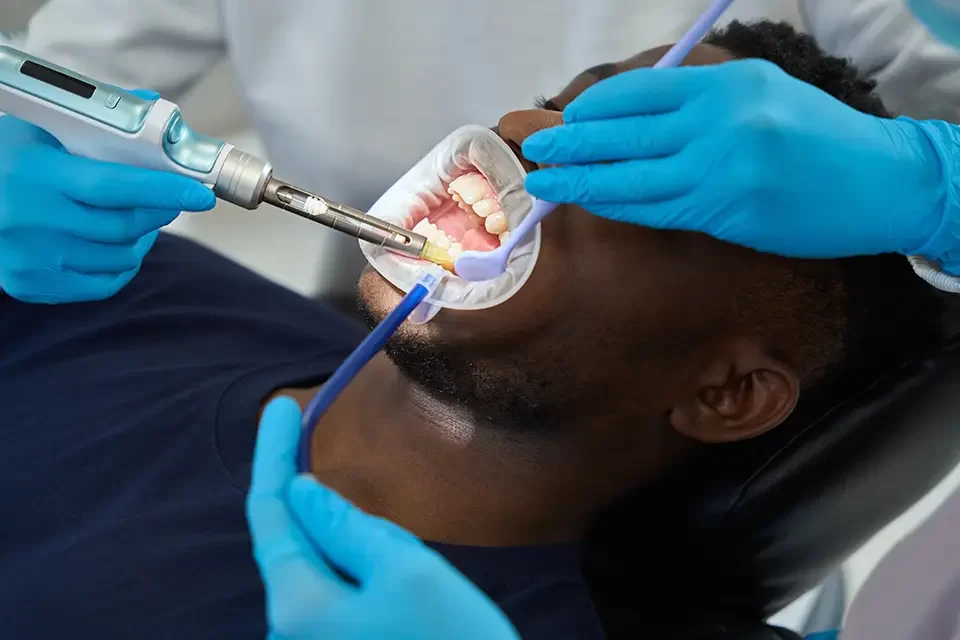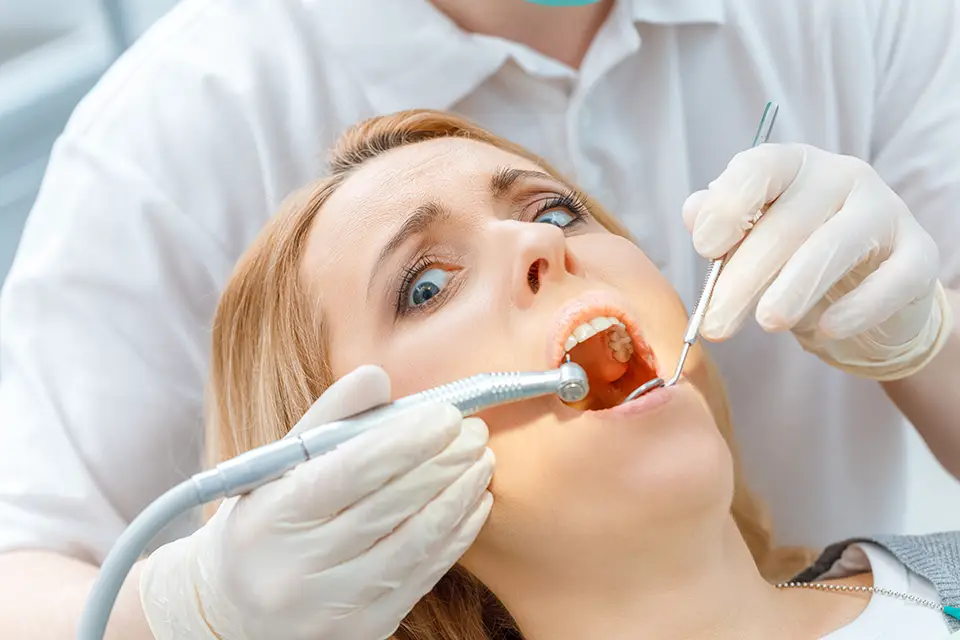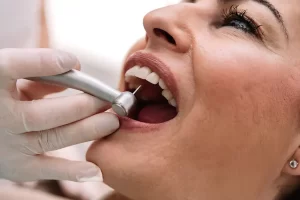Gum disease doesn’t shout at the start. It shows up as small warnings—bleeding after you brush, red or puffy gums, breath that never seems fresh. Many people in Etobicoke assume it will pass. It usually doesn’t. Plaque hardens into tartar, inflammation settles in, and the tissues that hold your teeth begin to change. That’s why understanding prevention and how to treat gum disease matters. Early action is the difference between a quick course correction and long-term repair.
At FIFTH ST Dental in Etobicoke, we see every stage—from gingivitis that reverses with a thorough cleaning to periodontitis that needs structured therapy and maintenance. The goal is straightforward: protect the bone and gums that support your teeth, restore stability, and keep you comfortable. If you’re already searching for how to treat gum disease, you’re in the right place; the path forward is clear once we identify your stage and tailor a plan.
What Gum Disease Actually Is
Periodontal disease is a chronic bacterial inflammation of the supporting structures of the teeth. It begins at the gingival margin where biofilm (plaque) accumulates. When plaque mineralizes into calculus (tartar), the root surface becomes a stable home for bacteria. The host response—your immune system—does the rest: inflammation, pocket formation, and, if unchecked, loss of connective tissue attachment and bone.
Clinically, gingivitis presents with bleeding and erythema but no attachment loss; it’s reversible. Periodontitis adds measurable pocket depth, radiographic bone loss, and, sometimes, tooth mobility. Pain is not a reliable early indicator, which is why routine periodontal charting (probing depths, bleeding on probing, recession, mobility) is essential. The earlier we intervene, the less invasive the treatment when asking how to treat gum disease.
Early Signs You Shouldn't Ignore
- Bleeding when brushing or flossing, even with a soft brush
- Persistent halitosis (bad breath) or a sour taste that doesn’t resolve
- Gums that look red, swollen, or feel tender to touch
- Teeth that feel slightly loose or a bite that no longer lines up the same
- Gum recession—teeth appear “longer,” or notches near the gumline feel sensitive
How to Prevent Gum Disease Day to Day
- Brush Twice Daily (2 minutes): Angle bristles toward the gumline; gentle, overlapping strokes
- Floss Once Daily: Curve around each tooth to clean the sulcus; don’t snap straight through
- Professional Cleanings on Schedule: Remove calculus that home tools can’t reach
- Quit Smoking or Vaping: Nicotine decreases blood flow and impairs healing
- Nutrition that Supports Gums: Steady protein, vitamins C/D/K, and less added sugar

How to Treat Gum Disease in the Clinic
Treatment is staged to your diagnosis. For most patients with early to moderate disease, the first line is scaling and root planing (SRP)—meticulous removal of subgingival calculus and biofilm, followed by smoothing the root surface to reduce bacterial re-colonization. Where pockets bleed or remain deep, we may place adjunctive antimicrobials locally. Advanced cases can require periodontal surgery (e.g., flap access to debride defects, pocket reduction, or regenerative procedures when anatomy permits).
Across all stages, periodontal maintenance is non-negotiable. After active therapy, we shorten recall intervals (often every 3–4 months) to disrupt biofilm before it matures. If you’re asking how to treat gum disease long term, the answer is targeted therapy plus disciplined maintenance.
How to Treat Gum Disease at Home After Treatment
- Use a soft or extra-soft brush; replace every 3 months or sooner if bristles flare
- Clean the interdental space daily (floss, interdental brushes, or water flosser as advised)
- Brush the gumline gently; don’t “scrub”—pressure should be light but thorough
- Rinse only if recommended (chlorhexidine or antimicrobial) and follow duration exactly
- Log your routine for two weeks; consistency beats intensity for long-term results
How to Treat Gum Disease: Why FIFTH ST Dental for Periodontal Care in Etobicoke
Technique and follow-through matter. Our team pairs calibrated periodontal charting with high-resolution imaging to map disease accurately, then sequences care so each appointment builds on the last. You’ll leave each appointment knowing what changed (pockets, bleeding points), what’s next, and what to do at home. It’s a collaborative process designed for durable outcomes—not just a quick clean and hope for the best when searching “how to treat gum disease”.
What Results and Timelines Look Like
Most patients notice less bleeding within 2–3 weeks after SRP if home care improves. Pocket depth reduction and tissue tone typically stabilize over 6–12 weeks as inflammation resolves. Moderate periodontitis often requires staged care over several visits with maintenance every 3–4 months thereafter. Advanced cases can take longer and may include surgical phases; stability—not a single “cure”—is the clinical target. The more consistent your home routine, the more predictable the result.

How to Treat Gum Disease: Costs, Insurance, and Ongoing Maintenance
- Coverage varies: many plans contribute to SRP and maintenance at defined intervals
- Surgical procedures are typically pre-authorized; we’ll provide documentation
- Maintenance frequency (3–4 months) protects your initial investment in therapy
- Skipped recalls allow biofilm to mature; delays usually mean more treatment later
- We’ll map a phased plan so costs and clinical goals are clear from the start
Protect Your Smile Today
Gum disease doesn’t just go away. It moves forward quietly, and by the time it hurts, the damage is usually worse. The earlier you deal with it, the easier it is to manage. That’s why simple habits and professional care matter so much.
At FIFTH ST Dental in Etobicoke, we see patients with every stage of gum disease. Some only need a cleaning and better daily care. Others need deeper treatment and regular check-ups. Whatever the stage, the goal stays the same: stop the disease and keep your teeth.
If your gums bleed or feel sore, don’t wait and hope it settles. Book a visit, talk with our team, and learn step by step how to treat gum disease before it gets worse. A healthier smile can start with just one appointment.
FAQs About How to Treat Gum Disease
Should I worry if I have gum disease?
Yes—because it progresses quietly. Early treatment when asking “how to treat gum disease” prevents attachment and bone loss, preserves teeth, and reduces systemic inflammatory burden.
How to 100% get rid of gum disease?
Gingivitis can be fully reversed. Established periodontitis cannot be “cured,” but it can be controlled—often very predictably—with debridement, possible surgery, and strict maintenance.
Can I live a long life with gum disease?
You can if it’s managed. Unmanaged disease risks tooth loss and is associated with systemic conditions; managed disease can remain stable for decades.
How do dentists treat gum disease?
By removing subgingival biofilm and calculus (SRP), adding localized antimicrobials when indicated, performing periodontal surgery for access/regeneration in advanced sites, and placing you on a 3–4-month maintenance interval.





